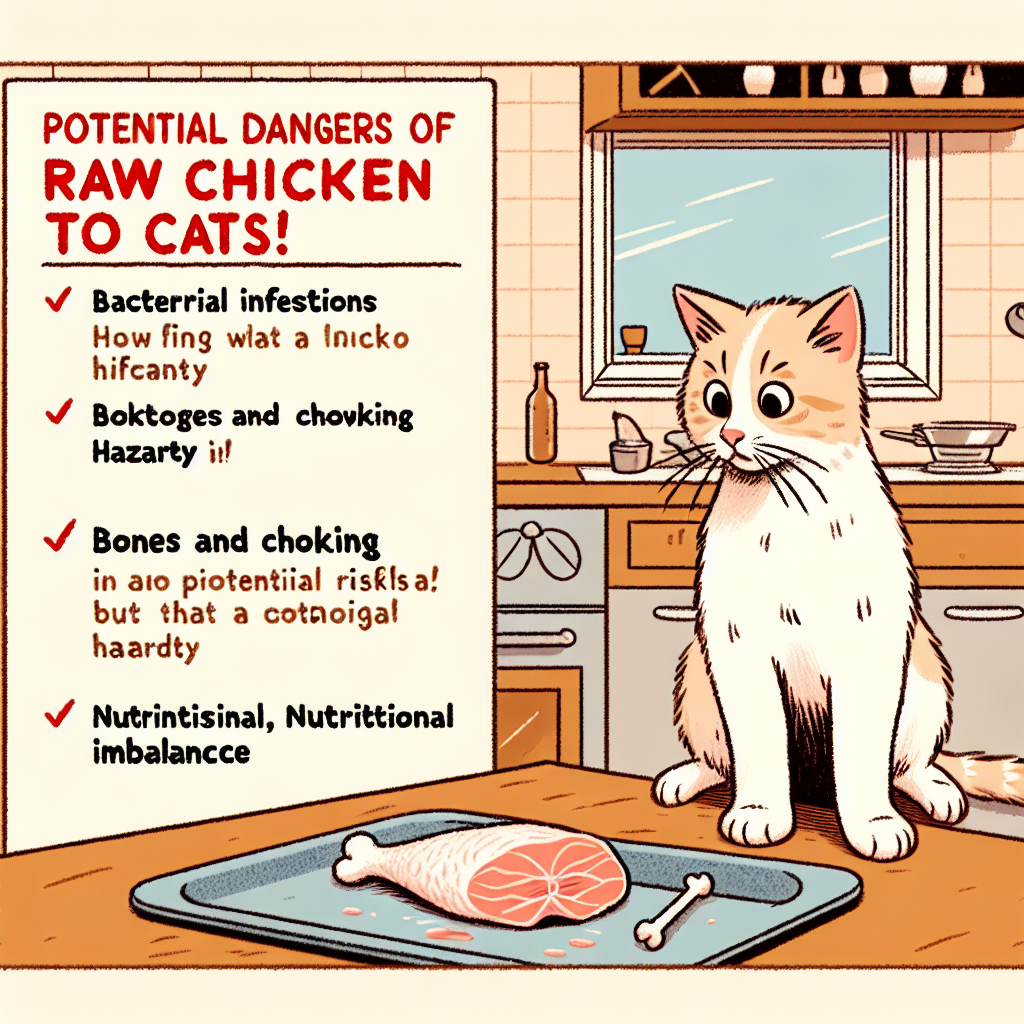===
Feeding your feline friend a diet that aligns with their natural instincts can be tempting, especially when considering the allure of raw chicken. However, understanding the risks associated with such a diet is crucial for your cat’s health. Raw chicken encounters can potentially expose your beloved pet to various hazards, leading to serious health consequences. This article explores these risks comprehensively while providing key considerations that can safeguard your cat’s well-being.
Examining the Potential Hazards of Feeding Cats Raw Chicken
Feeding cats raw chicken might seem like a wholesome, protein-rich option that mimics their ancestral dietary habits. However, one must acknowledge the significant health risks inherent in this practice. One of the most pressing concerns is the presence of harmful bacteria, such as Salmonella and Campylobacter, which can thrive in raw poultry. These bacteria can lead to severe gastrointestinal illnesses in both cats and humans, as cats can easily transmit these pathogens through their feces, potentially contaminating their environment and their owners.
Another critical risk associated with raw chicken is the imbalance it can create in a cat’s nutritional profile. Cats are obligate carnivores, which means they require specific nutrients that may not be adequately provided by raw chicken alone. For instance, a diet solely based on chicken lacks essential nutrients like taurine, which is vital for heart health and vision. Over time, feeding your cat an unbalanced diet can lead to deficiencies that manifest in serious health issues, including heart disease and compromised immune function.
Moreover, the risk of bones must not be overlooked. While many cat owners believe that raw chicken bones are safer than cooked bones, they can still pose a choking hazard or cause internal injuries. Raw bones can splinter or get lodged in your cat’s throat or digestive tract, leading to painful and costly veterinary interventions. As such, the supposed benefits of feeding cats raw chicken can quickly be overshadowed by the potential dangers involved.
Key Considerations for Ensuring Your Cat’s Health and Safety
To ensure that your cat remains safe while exploring dietary options, it is crucial to consider several factors when contemplating a raw chicken diet. Firstly, consulting with a veterinarian before making any changes to your cat’s diet is essential. An experienced veterinarian can provide tailored advice based on your cat’s unique health needs and dietary restrictions, ensuring that any changes promote overall wellness rather than risking it.
Additionally, if you choose to include raw chicken in your cat’s diet, sourcing high-quality, reputable products is imperative. Look for chicken specifically labeled for raw feeding, as these products are often processed under strict safety guidelines to minimize bacterial contamination. Avoid purchasing raw chicken from unreliable sources, as this can expose your cat to potentially dangerous pathogens, negating any benefits of a raw diet.
It’s also important to maintain rigorous hygiene practices when handling raw chicken. This includes using separate cutting boards for raw meat, thoroughly washing your hands and all utensils after handling raw chicken, and ensuring that your cat’s feeding area is kept clean. Implementing these practices can significantly reduce the risk of bacterial transmission, making the experience safer for both you and your feline companion.
===
In conclusion, while the allure of feeding your cat raw chicken may stem from a desire to provide a more natural diet, the associated risks cannot be underestimated. By understanding the potential hazards and implementing safety measures, you can strive to create a balanced and nutritious diet for your cat. Always prioritize your pet’s health by consulting with veterinary professionals and adhering to safe food handling practices. Taking these steps will not only facilitate a better understanding of your pet’s dietary needs but also contribute to their long-term health and happiness. If you’re passionate about your cat’s nutrition, consider exploring balanced options that prioritize their safety without compromising their dietary instincts.
Measuring Your Dog’s Height: A Comprehensive GuideUnderstanding How Dogs Become Infested with FleasUnderstanding the Lifespan of Pug Dogs: What to ExpectRelevant LinkRelevant LinkRelevant Link
